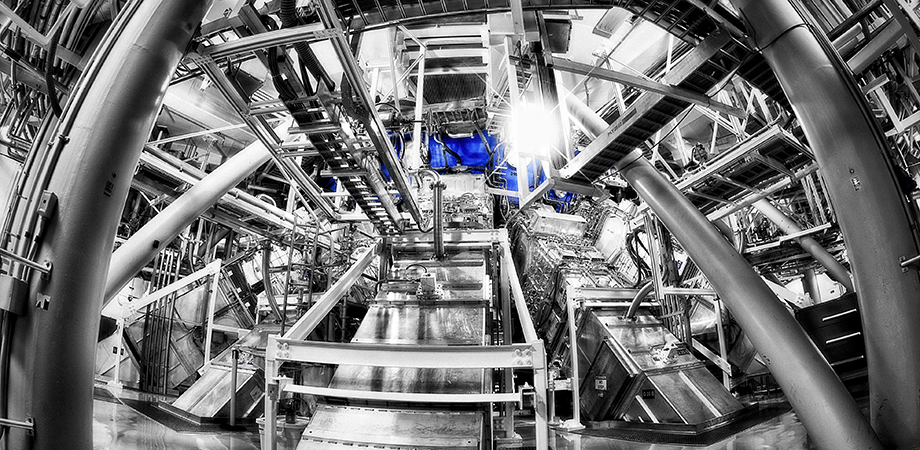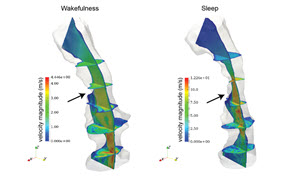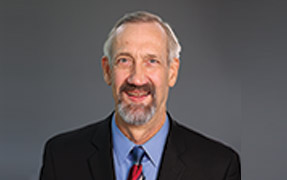Back in the Power Game

It's no secret that the US has trailed the rest of the world when it comes to high-power ultrafast laser science. While North America well and truly led the petawatt pack at the turn of this century, the intense laser science scene has since shifted towards Europe and Asia.
But this is about to change. In September 2019, Karl Krushelnick, director of the Gérard Mourou Center for Ultrafast Optical Science (CUOS) at the University of Michigan, revealed he and colleagues had won $16 million from the National Science Foundation to build a world-class high-power laser that he believes will bring the US back on track.
As he says, "This laser will have the highest peak power in the US and will be among the world's most powerful laser systems for the next decade." The CUOS team will be drawing on the US's high-power laser heritage alongside decades of photonics innovation worldwide.
In the race for laser power, Lawrence Livermore National Laboratory (LLNL) set the standard back in 1996, when a beamline at its Nova facility broke the petawatt barrier, generating nearly 100 times the world's total energy consumption rate in a fleeting half a picosecond. LLNL physicist Michael Perry and colleagues had harnessed chirped-pulse amplification, a method pioneered by Nobel laureates Gérard Mourou and Donna Strickland, to amplify an ultrashort laser pulse to this mighty million-billion watt level.

LLNL staff modified one of Nova's existing arms to build an experimental chirped pulse amplification laser that generated the world's first petawatt pulse in 1996. Credit: Lawrence Livermore National Laboratory
Nova made history, yet in a bid to achieve fusion ignition, the facility was swiftly succeeded by the National Ignition Facility (NIF). Today, this stadium-sized energetic laser facility can generate mammoth 2.15 MJ energy pulses to take deutrium-tritium fuel capsules to fusion temperatures. But because of its relatively long laser pulses, the mighty NIF does not exceed a petawatt (PW) of power.
In the interim, tens of facilities from the US to the UK and China to Japan have reached and even exceeded the petawatt threshold. Right now, all eyes are on Eastern Europe's $875 million Extreme Light Infrastructure (ELI), which can generate pulses that pack a formidable ten petawatts of peak power on its ultrahigh intensity laser system.
Meanwhile, in Asia, China hosts a 5.3 PW laser at its Shanghai Superintense Ultrafast Laser Facility and plans to build an unimaginable 100 PW laser by 2023. And South Korea's Center for Relativistic Laser Science (CoReLS) is now home to a 4 PW laser.
Thankfully, this growing power gap did not go unnoticed by US science. In December 2017, the National Academies of Sciences, Engineering, and Medicine released a report stating the US was losing ground in intense ultrafast laser science and called on the government to fund at least one high-power laser facility.
The call didn't fall on deaf ears. With the latest NSF $16 million grant, CUOS researchers have already started to build ZEUS, the Zettawatt-Equivalent Ultrashort Pulse Laser System. CUOS plasma physicist Alexander Thomas is excited.
"The National Ignition Facility is a very, very impressive facility, but it's not a short-pulsed laser and just doesn't do the same physics [as facilities such as ELI are designed to do]," he says. "But now, we're building a laser system that can perform at a world-class level, and because of our design, we're going to be able to do things that other people can't."
ZEUS will also serve as a high-power laser user facility for all US scientists, as well as the wider international research community. Thirty weeks a year have been set aside for external user experiments, and requests for beamtime will undergo an open and transparent external review process.
"We'll be doing frontier science with ZEUS, but it also has so many practical applications," adds Thomas.
• • •
ZEUS will be built around CUOS's existing high-intensity HERCULES laser. The latter currently occupies several rooms at CUOS, but once ZEUS is complete, it will sprawl across an incredible 7,500 square feet.
"HERCULES will serve as a front-end for ZEUS, and in part, this is why we're getting a lot of bang for the buck here," says Thomas. "We're not starting from scratch; we're leveraging some $20 million dollars of past investment into HERCULES, mainly from the National Science Foundation, over the last twenty years."
He adds, "We also have a team of world-class experts in high-power ultrashort pulse laser technology, led by research scientists Anatoly Maksimchuk and John Nees, which is why we are able to build ZEUS here."

Alongside Michigan colleagues, research scientists Anatoly Maksimchuk and John Nees are set to construct ZEUS from CUOS's 500 TW system, HERCULES. Credit: Joseph Xu, University of Michigan College of Engineering
Slava Lukin, program director of plasma physics from the Division of Physics at the NSF agrees that ZEUS's relatively cheap price is largely due to the HERCULES legacy and team. "The CUOS team is not inventing a laser here, but is bringing together a combination of many lasers to build a very powerful system in a reasonable timeframe and at a reasonable price tag. This wouldn't have been possible five years ago, but it is now, and having one of the most experienced teams in the world bringing this together is unique." But as he also highlights, "We are not operating in a vacuum, and given the interest worldwide in high-intensity lasers, some of the necessary technology is now semi-commercial, and quite frankly, also cheaper."
At the heart of HERCULES lie titanium-sapphire crystals. Light pumped into these discs is then bounced through a system of mirrors and lenses, getting stretched, energized, and squeezed via chirped pulse amplification into powerful 500 TW pulses that are focused using adaptive optics to tremendously high intensities.
Back in 2008, the mighty system was classed as the highest intensity laser in the world, squeezing 20 J of energy into a 1.3 micron focal spot to deliver a whopping 2 × 1022 W/m2, or 20 billion trillion W/m2, if that's easier to wrap your head around, for a duration of only 30 femtoseconds. At the time, this intensity was two orders of magnitude greater than ever achieved before.
Clearly, ZEUS has good credentials, but the best is yet to come. As Thomas points out, using additional pump lasers and a longer chain of amplification stages, he and colleagues will raise the peak pulse power of the HERCULES laser from 500 TW to an impressive 3 PW, but the laser's pulses will remain at 30 femtoseconds in length.
"Adding more power to any high-powered laser system really is a case of adding more amplifiers or pump lasers," says Thomas. "We recently upgraded HERCULES from 300 TW to 500 TW by replacing its homemade pump lasers with commercial versions, and now we're extending this further with the amplification stages and pump energy, which is a big part of the cost."
What's more, the plasma physicist reckons that by using adaptive optics in the form of deformable mirrors with a controllable reflective surface shape, he and colleagues will be able to focus ZEUS's beam to a 1 micron focus spot, giving intensities approaching an incredible 1 × 1023 W/m2. This is an order of magnitude larger than HERCULES's record-breaking 2 × 1022 W/m2.
"With many of these high-powered laser setups, the amplification system causes imperfections in the wavefront that can limit the focusability of the laser," says Thomas. "This isn't unique to ZEUS, but by using these deformable mirrors, the wavefront is adjusted to compensate for imperfections and maximize the intensity."
But crucially, ZEUS's 3 PW laser will be joined by a second beamline that will be used to generate an extremely bright GeV energy electron beam. And this is where things get exciting.
In this "dual beamline" configuration, the high-energy electron beamline will shoot its charged particles directly at the high-intensity 3 PW laser light coming from the opposite direction to create the system's namesake zettawatt-equivalent ultrashort pulses, that is, 1 × 2021 W pulses.
This method of mimicking a much more powerful laser by colliding with a high-energy electron beam relies on a plasma physics phenomenon known as laser wakefield acceleration. Laser wakefield acceleration uses a laser pulse to create charge separation, or a "charge wake," in the sea of ionized gas or plasma that trails the laser. The electric field in this wake imparts oscillatory energy to electrons, accelerating the particles to higher energies, so in effect, the electrons are picking up energy while "riding" this plasma wake.
In the case of ZEUS, the massive electric fields generated by its mighty multi-petawatt laser will impart enormous oscillatory energy to the electrons in its plasma wake, propelling the particles to speeds approaching the speed of light.
"When we collide our GeV electron beam with our principal laser, the electrons are going to experience a huge electric field, and 'feel' an increase in [energy] intensity of around a million times," says Thomas. "So, from the point of view of these accelerating electrons, the petawatt laser now actually feels like a zettawatt laser, which of course motivates ‘zettawatt-equivalent' in ZEUS."
And of course, the implications are profound. Using ZEUS, Thomas and colleagues hope to study strong field physics and relativistic plasma as never before, testing the limits of the theory of quantum electrodynamics in super-strong electromagnetic fields and learning how the universe operates at the subatomic level.
"By making use of ZEUS' multiple-laser arm system, we are effectively able to explore intensities that are six orders of magnitude higher than a single laser beamline," he adds. "And so we can probe quantum electrodynamics at the extremes of field strength, which is where you can get these exotic and more uncertain effects."
As part of their investigations, the researchers hope to look at the quantum vacuum, essentially the underlying fabric of spacetime. Theory predicts that the quantum vacuum isn't actually empty, but instead contains matter and antimatter (electron-positron) pairs that fleetingly flicker into existence before annihilating each other.
Given the power and intensity of ZEUS, the researchers intend to eventually harness the laser's strong electric field to break the attraction between electron-positron pairs in a vacuum, so the particles escape mutual annihilation, and matter and antimatter are created from nothing.
"If we fired ZEUS's three petawatts into a vacuum, not much would happen," says Thomas. "However, if we interact this laser with the electron beam [in a vacuum] then we could perhaps start to rip the vacuum apart, and start to produce matter and antimatter out of almost nothing."
Thomas concedes that breaking the vacuum directly isn't going to happen right away, but clearly every increase in laser power and intensity brings researchers closer to this holy grail of 21st-century laser physics. In the interim, ZEUS will also be used for "a whole laundry list of scientific applications" as Thomas puts it. The plasmas generated by the laser system will be similar to those believed to exist in astrophysical bodies, so researchers will be able to study the conditions predicted to exist in stars and around black holes.
As NSF's Lukin points out, laboratory astrophysics can't come soon enough. "Amongst astronomy researchers is this general recognition that to understand and continue to interpret [space] observations, more laboratory work is needed as they really need to understand the plasma physics here," he says.
Meanwhile, the fact that ZEUS can accelerate electrons to blisteringly fast speeds in mere centimeters instead of the kilometers demanded by conventional particle accelerators will make it a powerful, compact synchrotron light source. What's more, being able to shrink the size of the accelerators that generate proton beams and radioactive isotopes opens the door to bedside cancer therapies.
And because the only thing better than more lasers is yet more lasers, the laser system will also have a third, longer-pulse laser to enable pump-probe experiments so researchers can, for example, use x-ray spectroscopy to study atomic-scale processes in materials across ultrashort timescales.
"With multiple lasers that provide multiple options for researchers, ZEUS is going to have a real impact on the [academic] community...once constructed, this user facility will provide 30 weeks every year to external users," says Lukin. "I really do believe in what we are doing here, and right now really is the right time to do this."
Thomas couldn't agree more.
"With ZEUS, the science is so interesting as we're dealing with plasma physics mixed with ultrafast optics, relativity, and particle physics, and yet it also provides this multitude of applications," he says. "So we have this perfect combination, and that's why I'm in the game."
Rebecca Pool is a science and technology writer based in Lincoln, United Kingdom.



